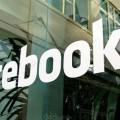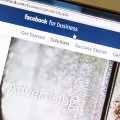Four years after its mobile release, Facebook’s instant messaging service is finally on the path toward making money.
Facebook CEO Mark Zuckerberg, in his quarterly earnings call with investors, said he plans to start monetizing Messenger in much the same way he did with Facebook and News Feed.
Zuckerberg has said in the past he believes in waiting until his products hit 1 billion users before focusing how to make money with them. Facebook Messenger has nearly hit that threshold, logging 700 million monthly active users.
Rather than simply start charging, Messenger plans to focus on building organic connections between users and businesses, using Facebook as its model.
Early on, Facebook encouraged businesses to set up free pages and build up followers rather than flood the site with revenue-producing banner ads. Eventually, businesses started paying to promote posts, which today earn Facebook much more than the banner ads that appear on the side of pages.
Earlier this year, Facebook said it planned to start allowing companies to use Messenger for customer-service inquiries or to send customers receipts or shipping updates for items they purchased.
Once it gets more people to use the service, it can then find a natural way to raise revenue from brands.
Facebook’s plans for Messenger come at a time when the social networking giant is seeing huge gains in mobile advertising. Facebook posted a 39% increase in second-quarter revenue, the majority of which came from advertising on smartphones and tablets.
Facebook, combined with Google, are expected to capture more than half of the $69 billion global mobile-advertising market this year, according to market research.
Google still leads with the largest share, but Facebook is growing more quickly as more advertisers are turning to the social media site because it allows them to target specific users.
Facebook’s latest earnings exceeded analysts’ forecasts. Quarterly revenue reached $4.04 billion, up from $2.91 during the same period last year. Net income declined 9% to $719 million from $791 million a year ago, due mostly to heavy spending on data centers, new hires and other long-term initiatives.
The Menlo Park, Calif.-based company added 873 employees during the second quarter, creating a total workforce of nearly 11,000 people.
To boost profitability and offset expenses growing faster than revenue, the company reduced its expense growth forecast for the year from 65% to 60%.






